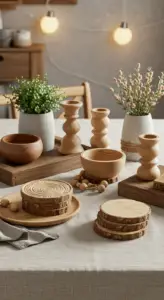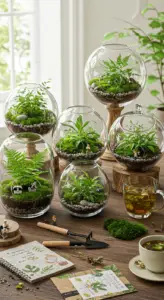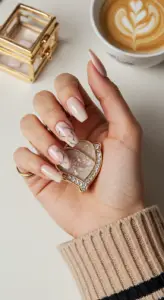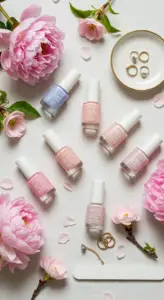1. Rustic Charm: Embrace Shiplap Wall Treatments in Modern Homes
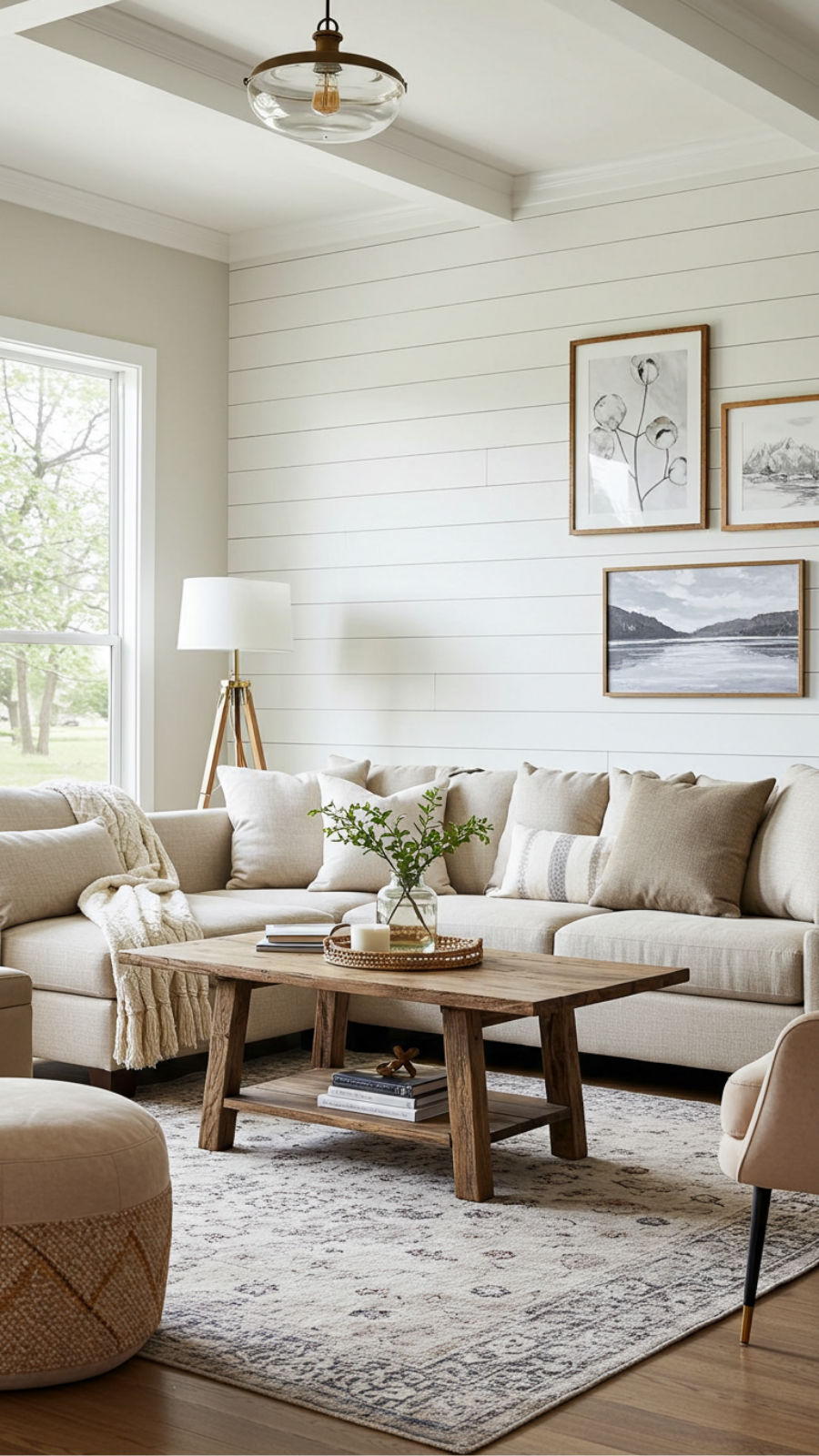
Rustic Charm: Embrace Shiplap Wall Treatments in Modern Homes
Shiplap wall treatments are making a stunning comeback in modern homes, offering a perfect blend of rustic charm and contemporary aesthetics. This versatile design element not only adds texture but also creates a warm, inviting atmosphere.
Current Trends in Shiplap Decor
In 2023, homeowners are increasingly opting for shiplap in various finishes—whitewashed, painted, or natural wood. The trend is moving towards using shiplap in unexpected places, such as ceilings, accent walls, or even as a backdrop for open shelving.
Expert Tips and Tricks
- Choose Your Finish Wisely: Opt for a finish that complements your existing decor. For a farmhouse look, go for reclaimed wood; for a modern twist, consider sleek, painted options.
- Mix Materials: Combine shiplap with metal accents or industrial lighting to achieve a balanced look.
- Accent with Color: Use contrasting colors on adjacent walls to make your shiplap feature pop.
Step-by-Step Guidance for Installation
- Measure: Start by measuring the wall space to determine how much shiplap you need.
- Preparation: Ensure your walls are clean and smooth; fill any holes or imperfections.
- Installation: Begin from the bottom and work your way up, securing each plank with nails or adhesive.
- Finish: Seal the wood with a clear coat to enhance durability and maintain its beauty.
Common Mistakes to Avoid
One frequent mistake is neglecting to consider the room’s lighting, which can dramatically affect the visual impact of shiplap. Additionally, overusing shiplap can lead to a cluttered look; aim for balance by incorporating different textures and materials.
Best Practices for Shiplap Walls
To truly embrace the rustic charm of shiplap, pair it with cozy furnishings and natural elements like plants or woven textiles. This creates a harmonious environment that feels both stylish and welcoming.
In conclusion, shiplap wall treatments are an exceptional way to infuse rustic charm into modern homes. With careful planning and attention to detail, you can transform your space into a beautifully curated retreat.
2. Elevate Elegance with Venetian Plaster for Luxe Interiors
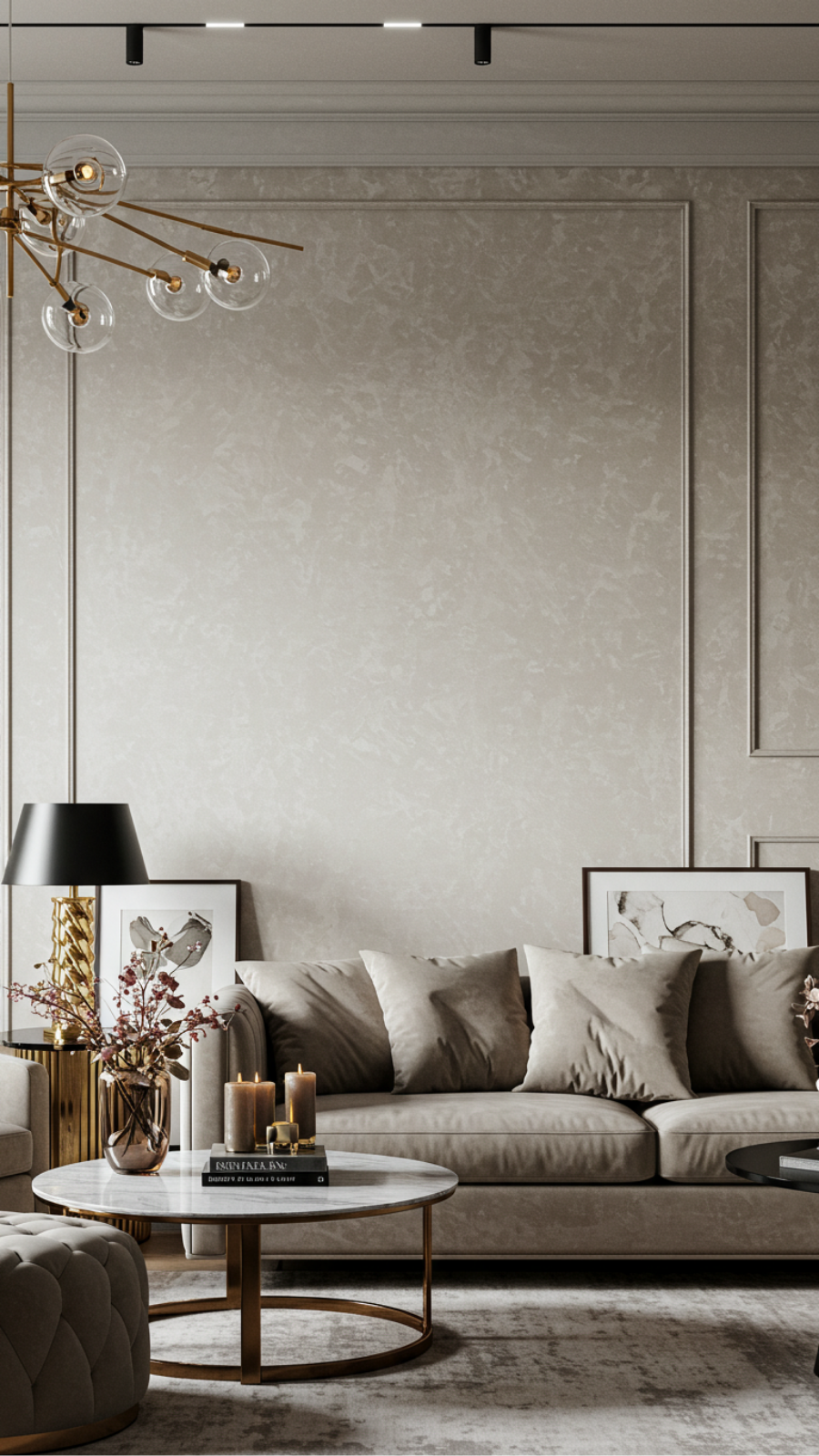
Elevate Elegance with Venetian Plaster for Luxe Interiors
Venetian plaster is a stunning technique that can transform any space into a luxurious haven. This ancient art form, known for its smooth, polished finish, adds depth and character to your walls, making it a popular choice in current home decor trends.
Understanding Venetian Plaster
Venetian plaster is composed of slaked lime, marble dust, and pigments, resulting in a durable and breathable surface. Its reflective qualities can create a sense of dimension, enhancing the ambiance of any room. For a chic, contemporary look, consider colors like deep navy or soft taupe.
Step-by-Step Application
- Prep the Surface: Ensure your wall is clean, dry, and free of imperfections.
- Apply Primer: Use a high-quality primer to help the plaster adhere better.
- Mix the Plaster: Combine the Venetian plaster with water according to the manufacturer’s instructions.
- First Coat: Use a trowel to apply a thin layer, allowing it to dry completely.
- Polish: After the first coat is dry, apply a second layer and use a sponge or trowel to polish for a smooth finish.
Expert Tips and Tricks
To achieve a truly sophisticated look, consider layering different colors of plaster for added depth. Additionally, using a wax finish can enhance the sheen and durability. Remember, patience is key; allow each layer to cure fully before applying the next.
Common Mistakes to Avoid
- Skipping the primer can lead to poor adhesion.
- Applying too thickly may cause cracking.
- Neglecting to practice on a sample board can lead to unexpected results.
By incorporating Venetian plaster into your home decor, you can elevate your interior spaces with timeless elegance. This technique not only enhances aesthetic appeal but also contributes to a luxurious atmosphere that exudes sophistication.
3. Cozy Up with Textured Wallpaper: Explore Fabric and Grasscloth Options
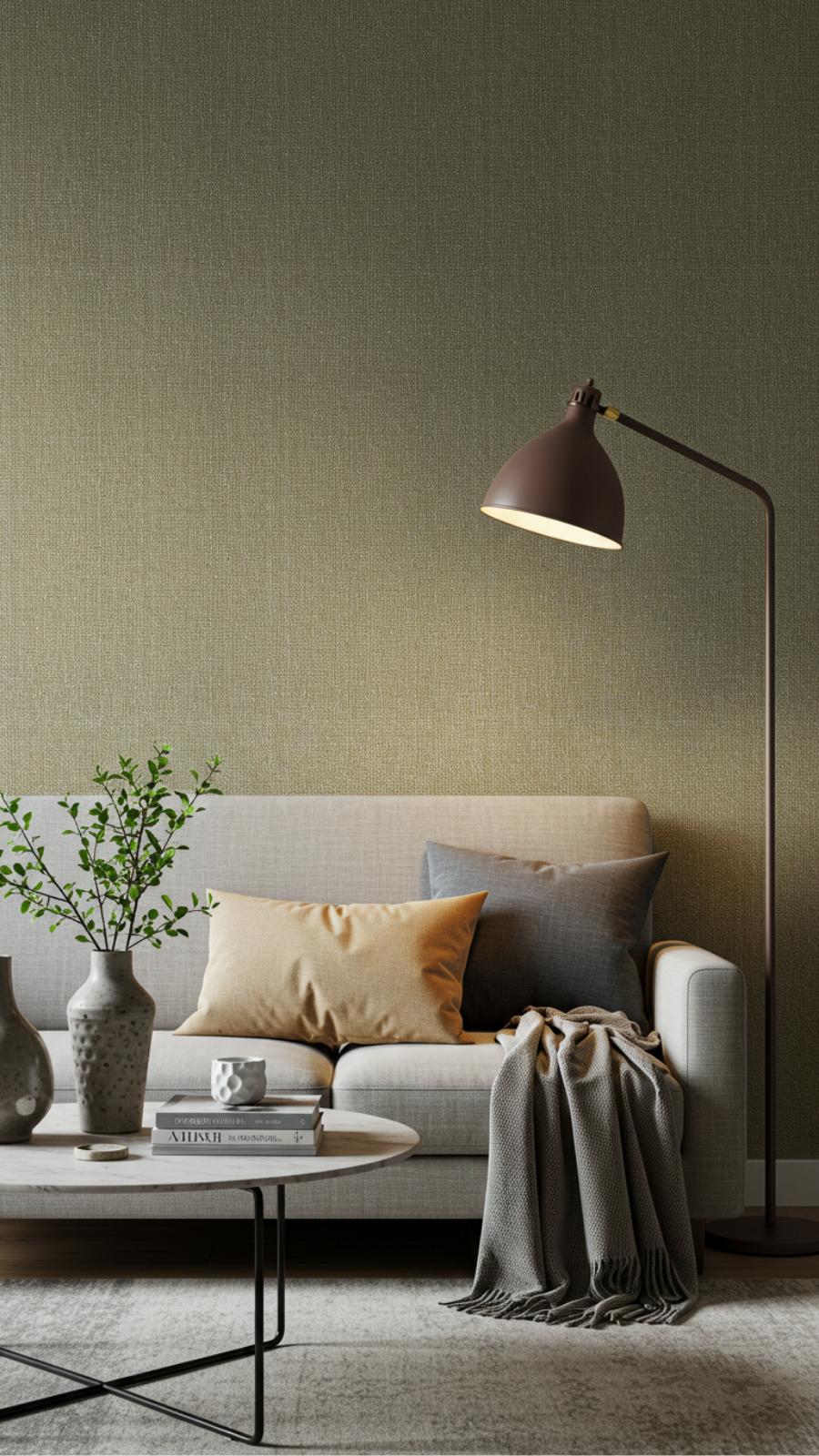
Cozy Up with Textured Wallpaper: Explore Fabric and Grasscloth Options
When it comes to home decor, textured wallpaper is a game-changer that adds warmth and character to any space. Among the most popular choices are fabric and grasscloth wallpapers, both of which offer unique aesthetic and tactile qualities that can elevate your home’s ambiance.
Current Trends in Home Decor
This year, the trend leans towards natural materials and rich textures. Grasscloth wallpaper, made from woven grass fibers, provides an organic feel, ideal for creating a serene retreat. Meanwhile, fabric wallpapers, available in various patterns and textures, can add a touch of luxury and comfort to your living areas.
Expert Tips for Choosing Textured Wallpaper
- Consider Scale: Large patterns can overwhelm small spaces, while smaller patterns can get lost in larger rooms.
- Test Samples: Always request samples to see how the texture interacts with your lighting.
- Coordinate Colors: Ensure your wallpaper complements existing decor elements, such as furniture and artwork.
Step-by-Step Guidance for Application
- Preparation: Clean the walls and repair any imperfections.
- Measure: Calculate the area to determine how much wallpaper you need.
- Application: Follow the manufacturer’s instructions for adhesive or paste application.
- Finishing Touches: Smooth out any bubbles and trim excess wallpaper for a seamless look.
Common Mistakes to Avoid
One of the most frequent errors is underestimating the importance of lighting. Textured wallpapers can look drastically different under various lighting conditions. Additionally, neglecting to prep your walls can lead to unsightly bumps or peeling.
Best Practices for Maintenance
Regularly dust your textured wallpaper with a soft cloth to maintain its appearance. For deeper cleaning, consult the manufacturer’s guidelines to avoid damaging the material.
Embrace the cozy vibes of textured wallpaper in your home, and transform your space into a haven of style and comfort.
4. The Art of Stenciling: Create Unique Patterns on Your Walls
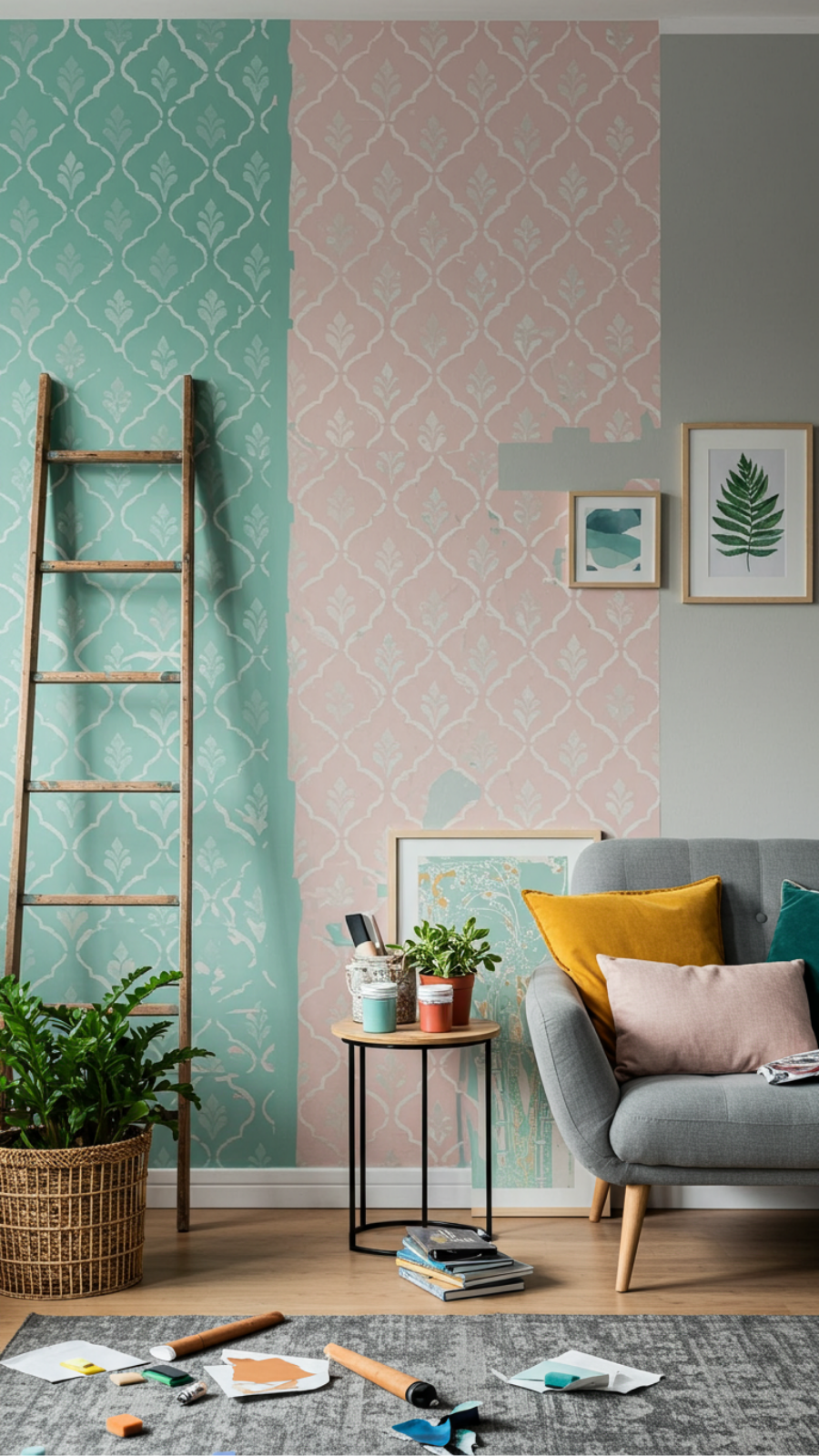
The Art of Stenciling: Create Unique Patterns on Your Walls
Stenciling is a timeless technique in home decor that allows you to create unique patterns on your walls, adding character and personal flair to any room. With current trends leaning towards personalized and bespoke designs, stenciling has made a significant comeback in 2023. This guide will offer expert-level advice on how to master this art form, ensuring your walls become a canvas of creativity.
Step-by-Step Guidance for Stenciling
Follow these steps to achieve stunning results:
- Choose Your Design: Select a stencil that resonates with your personal style. Popular choices include geometric patterns, florals, or even custom designs.
- Prepare the Wall: Clean the surface and, if necessary, apply a base coat of paint. Ensure it’s completely dry before proceeding.
- Secure the Stencil: Use painter’s tape to affix the stencil firmly to the wall, preventing any movement during application.
- Apply Paint: Use a stippling or sponge technique with a stencil brush to apply your chosen paint color. Less is more; dab off excess paint before applying to avoid bleeding.
- Remove and Repeat: Carefully lift the stencil to reveal your pattern. Repeat the process, aligning the stencil as needed for a seamless look.
Expert Tips and Common Mistakes to Avoid
To ensure a flawless finish, consider the following:
- Practice First: Always test your technique on a piece of cardboard before tackling your walls.
- Avoid Overlapping: Ensure proper alignment of your stencil to prevent unsightly overlaps.
- Use Quality Materials: Invest in high-quality stencils and paint for superior results.
By embracing the art of stenciling, you can transform your living space with unique patterns while showcasing your personal style. Embrace creativity and let your walls tell your story.
5. Geometric Wonders: 3D Wall Panels for a Contemporary Feel
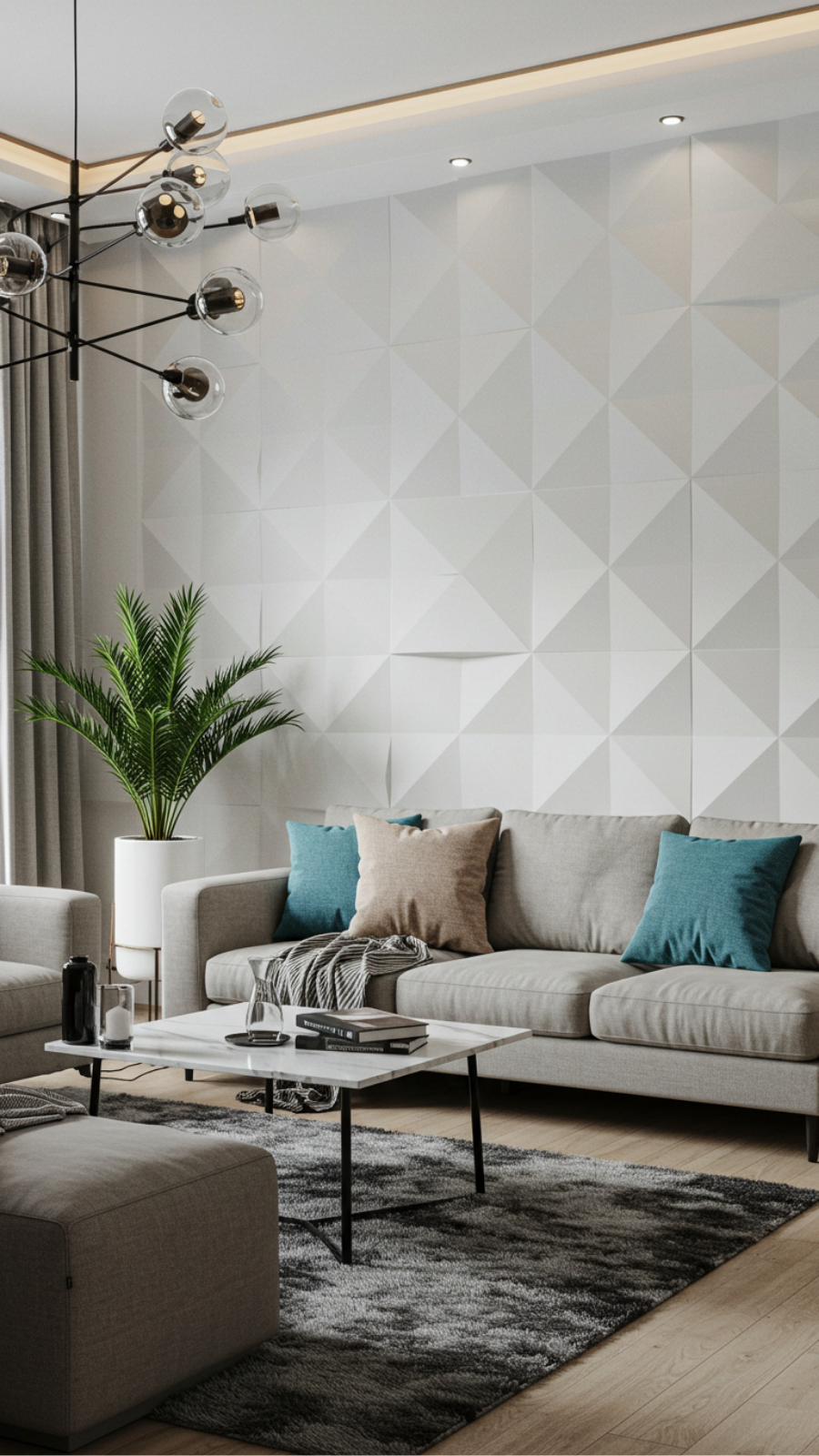
Geometric Wonders: 3D Wall Panels for a Contemporary Feel
Transforming your home decor with 3D wall panels can instantly elevate the aesthetic of any room. These geometric wonders offer depth, texture, and a modern touch that resonates with current trends in contemporary design.
Choosing the Right Materials
When selecting 3D wall panels, consider materials such as wood, PVC, or gypsum. Each material has its unique benefits:
- Wood: Adds warmth and can be stained or painted to match your interior.
- PVC: Lightweight and moisture-resistant, ideal for kitchens and bathrooms.
- Gypsum: Offers a smooth finish, perfect for a sophisticated look.
Step-by-Step Installation Guide
- Measure Your Space: Determine the area where you want to install the panels.
- Purchase Panels: Buy enough panels to cover the designated space, allowing for cuts and waste.
- Prepare the Wall: Ensure the wall surface is clean and smooth.
- Install Panels: Use adhesive or nails, following the manufacturer’s instructions carefully.
- Finish: Paint or stain the panels to achieve your desired look.
Common Mistakes to Avoid
While installing 3D wall panels can be a rewarding DIY project, avoid these common pitfalls:
- Skipping wall preparation, which can lead to uneven surfaces.
- Not accounting for lighting—3D panels can create shadows that alter the room’s ambiance.
- Choosing overly bold patterns that may overwhelm smaller spaces.
Best Practices for 3D Wall Panels
To maximize the impact of your 3D wall panels, keep these expert tips in mind:
- Select a focal wall to create a standout feature in the room.
- Pair panels with complementary decor elements such as modern furniture or minimalist art.
- Experiment with colors and finishes to suit your personal style.
Incorporate 3D wall panels into your home decor for a striking contemporary feel that reflects your unique personality. With these tips and tricks, you’ll create a stunning visual impact that captivates anyone who enters your space.
6. Natural Vibes: Incorporate Wood Slat Walls for Organic Aesthetics
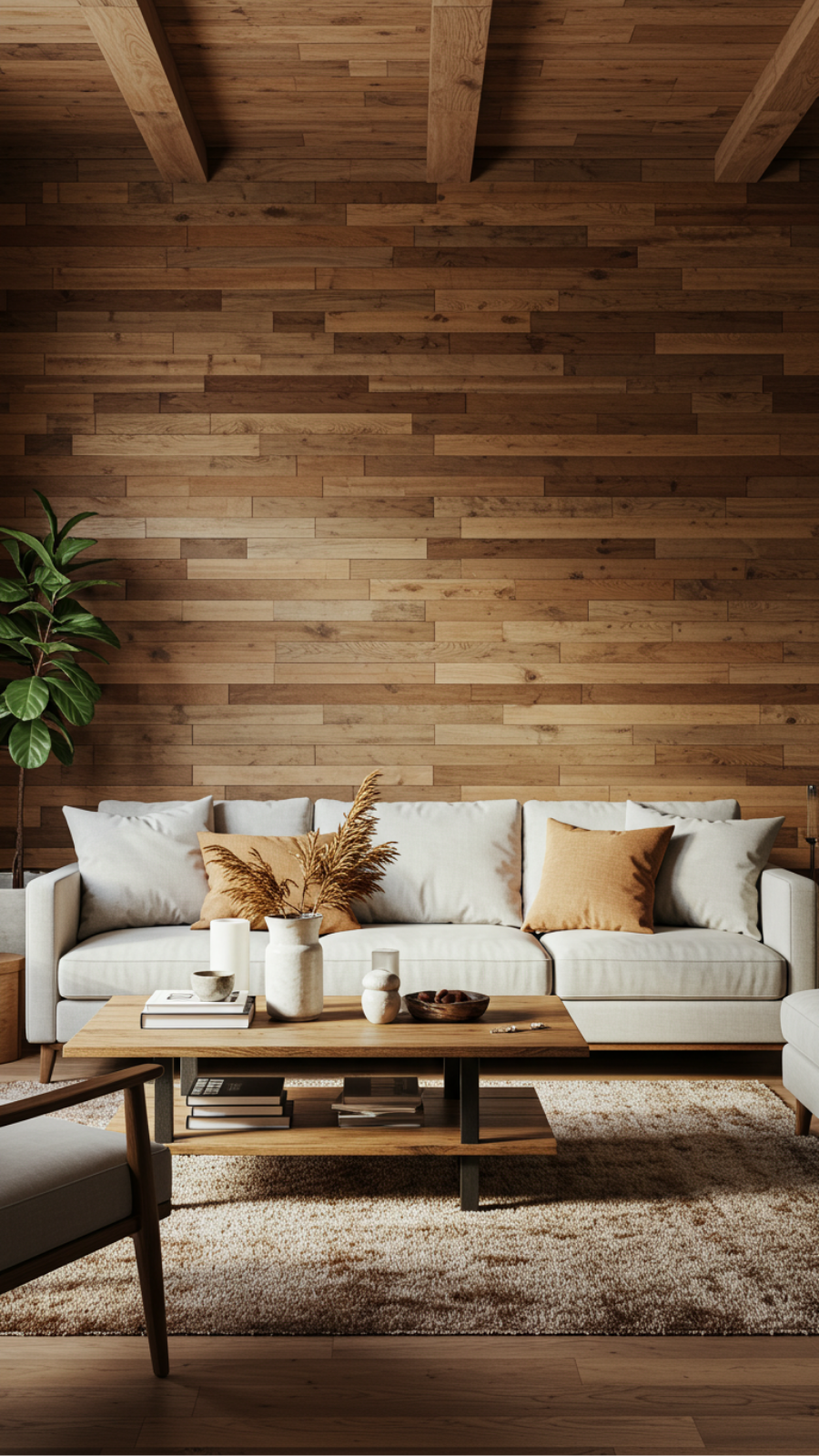
Natural Vibes: Incorporate Wood Slat Walls for Organic Aesthetics
Incorporating wood slat walls into your home decor offers a stunning way to achieve organic aesthetics that resonate with the current trends in eco-friendly design. These walls not only add warmth and texture but also create a harmonious connection with nature, making your space feel inviting and serene.
Expert-Level Advice
To effectively integrate wood slat walls, consider these expert tips:
- Choose the Right Wood: Opt for sustainably sourced wood, such as cedar or pine, which enhances the natural vibe.
- Color Palette: Keep the color palette neutral to allow the wood’s natural grain to shine. Light stains or natural finishes work best.
- Wall Placement: Feature walls in living rooms or bedrooms can create a striking focal point.
Step-by-Step Guidance
- Select Your Wood: Decide on the type of wood and finish that complements your existing decor.
- Measure Your Space: Calculate the square footage to determine how much wood you’ll need.
- Install the Slats: Use a level to ensure straight lines, and consider a nail gun for a professional finish.
- Style It Up: Accessorize with natural elements like plants or woven textiles to enhance the organic feel.
Avoid These Common Mistakes
While wood slat walls are a fantastic addition, be mindful of:
- Overcrowding the wall with decor, which can detract from the wood’s beauty.
- Neglecting proper sealing, leading to moisture damage over time.
Best Practices
To maximize the benefits of wood slat walls:
- Incorporate varying widths of slats for added visual interest.
- Pair with natural lighting to enhance the wood’s rich tones.
Embracing wood slat walls in your home not only elevates your decor but also promotes a sustainable lifestyle. With these expert insights, you can effortlessly create a space that exudes natural vibes and timeless elegance.
7. Industrial Edge: Exposed Brick Finishes for Loft-Style Living
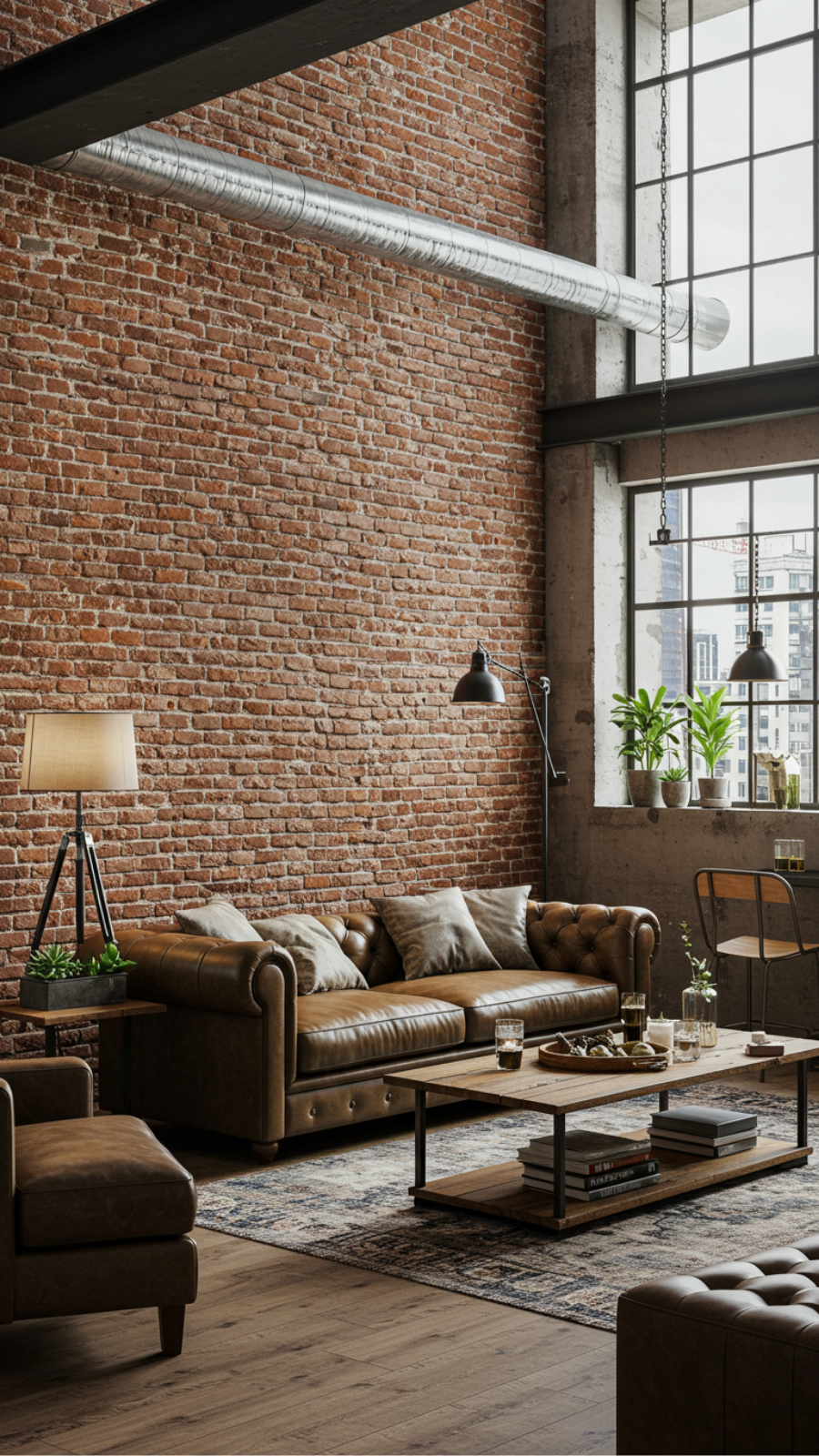
Industrial Edge: Exposed Brick Finishes for Loft-Style Living
Embracing an industrial edge in home decor, particularly through exposed brick finishes, can transform a space into a chic loft-style haven. This design trend not only enhances the aesthetic appeal but also adds character and warmth to modern living environments.
Current Trends in Exposed Brick Finishes
Exposed brick walls are increasingly popular in urban apartments and lofts, celebrated for their raw, unrefined look that contrasts beautifully with sleek contemporary furnishings. Combining natural materials like wood and metal with brick adds depth and texture to your space.
Expert Tips for Incorporating Exposed Brick
- Choose the Right Wall: Focus on a focal wall to maintain balance and avoid overwhelming the space.
- Paint for Contrast: Consider a white or light-colored brick for a modern twist.
- Accessorize Wisely: Use industrial-style furniture and light fixtures to complement the raw finish.
Step-by-Step Guidance
- Assessment: Evaluate your walls for structural integrity before exposing the brick.
- Preparation: Clean the wall thoroughly to remove any dust and debris.
- Finishing Touches: Seal the brick with a clear coat to prevent dust accumulation while preserving its rustic charm.
Common Mistakes to Avoid
- Overexposing multiple walls, which can make the space feel cramped.
- Neglecting to consider lighting, which is crucial for highlighting the texture of the brick.
Incorporating exposed brick finishes is a fantastic way to achieve that coveted industrial edge in your home. By following these expert tips and best practices, you can create a stylish, inviting space that showcases the beauty of raw materials.
8. Metallic Accents: Adding Dimension with Textured Foil Wallpaper
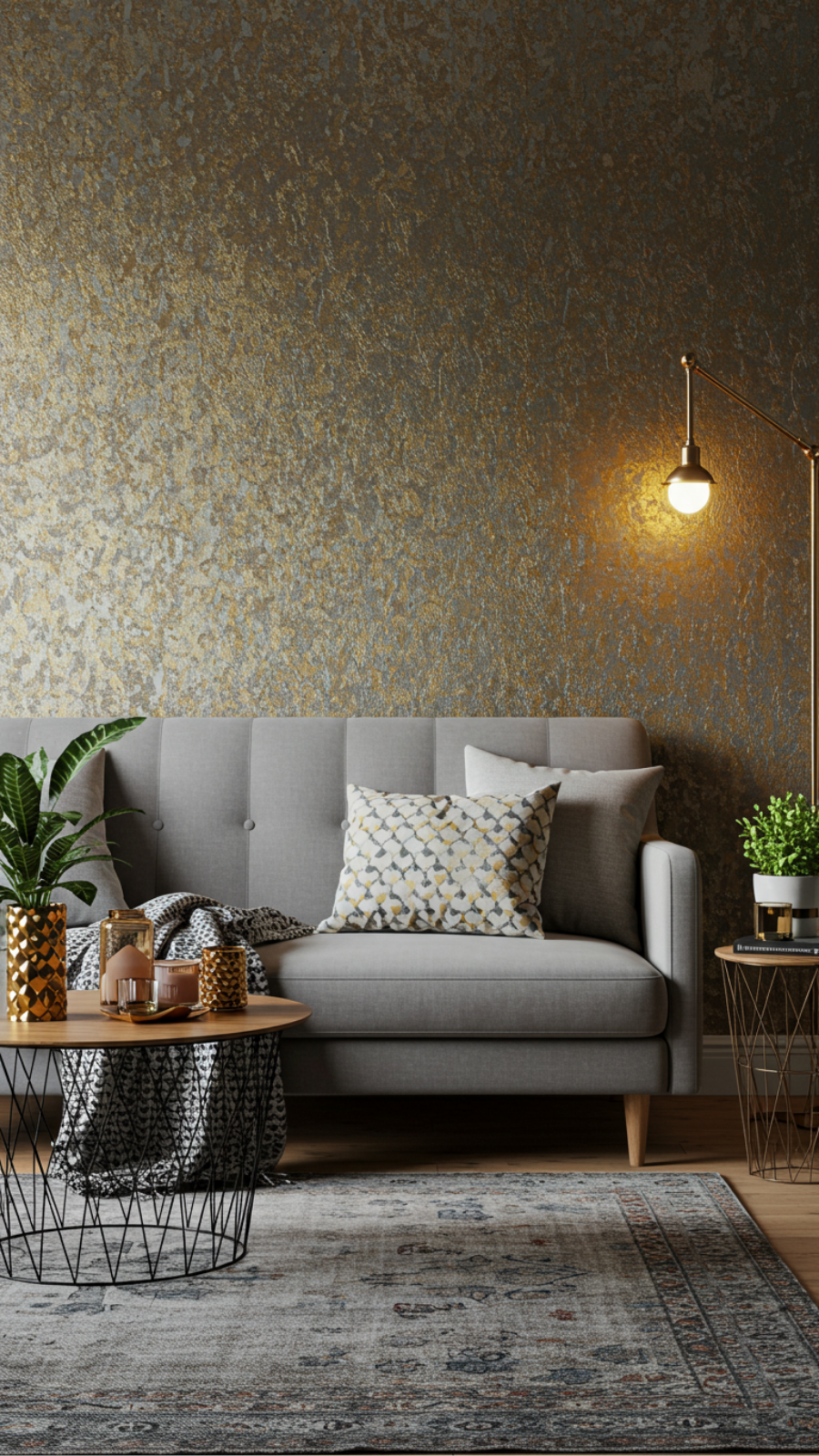
Metallic Accents: Adding Dimension with Textured Foil Wallpaper
In the realm of home decor inspirations, incorporating metallic accents can elevate your space, and textured foil wallpaper is a standout choice. This contemporary trend not only adds depth but also reflects light, creating a dynamic ambiance in any room.
Why Choose Textured Foil Wallpaper?
Textured foil wallpaper is versatile and can enhance various styles, from modern minimalist to eclectic bohemian. Its shimmering surface introduces a playful element, making it perfect for:
- Accent walls in living rooms
- Backdrops in dining areas
- Statement pieces in bedrooms
Expert Tips for Application
To successfully install textured foil wallpaper, follow these expert tips:
- Prepare the Surface: Ensure walls are clean, smooth, and primed for adhesion.
- Choose the Right Lighting: Install in well-lit areas to emphasize the metallic sheen.
- Match Patterns Carefully: If your wallpaper has a design, align it correctly for a seamless finish.
Common Mistakes to Avoid
When working with metallic accents, watch out for these pitfalls:
- Neglecting to test samples against your space’s lighting.
- Overusing metallics, which can overwhelm a room.
- Forgetting to allow adequate drying time before decorating.
Best Practices for a Stunning Look
To maximize the impact of your textured foil wallpaper:
- Pair with neutral furniture to highlight the wallpaper.
- Incorporate metallic accessories like lamps and frames to create cohesion.
- Consider a feature wall in a small space to avoid a crowded feel.
Incorporating metallic accents through textured foil wallpaper can transform your home, bringing a sophisticated flair that resonates with current trends. Embrace this stylish choice to create a dimension-rich environment.
9. Eco-Friendly Options: Reclaimed Materials for Sustainable Design
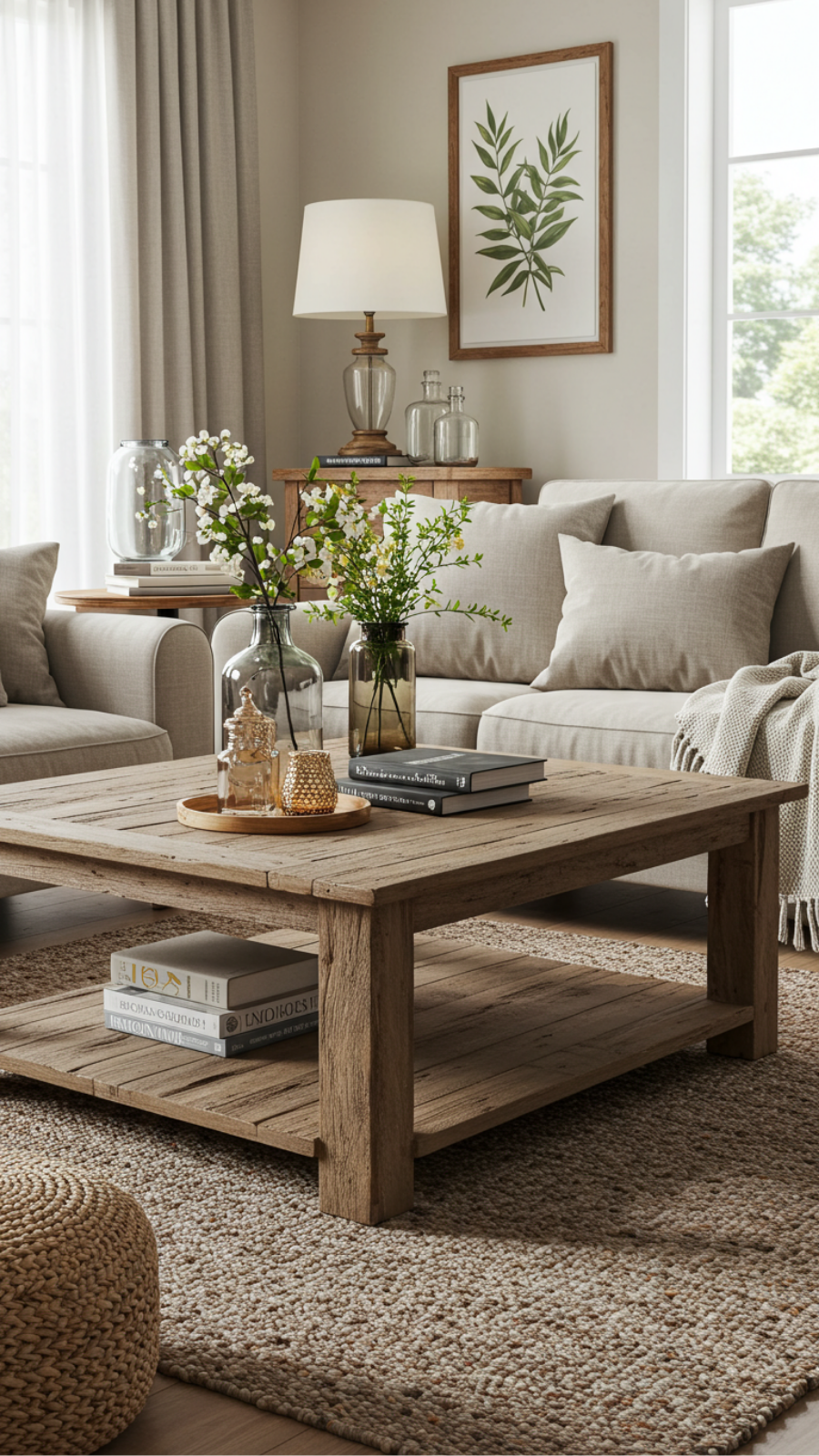
Eco-Friendly Options: Reclaimed Materials for Sustainable Design
In the world of home decor, sustainability is more than just a trend; it’s a lifestyle. Integrating reclaimed materials into your design not only reduces waste but also adds unique character to your space. Here’s how you can embrace eco-friendly options in your home decor.
Expert-Level Advice on Reclaimed Materials
Reclaimed materials can come from various sources, including old barns, factories, and even pallets. Here are some practical examples:
- Reclaimed Wood: Ideal for furniture, flooring, or accent walls, reclaimed wood adds warmth and history to any room.
- Salvaged Metal: Use old pipes or metal scraps to create stunning light fixtures or unique shelving units.
- Vintage Fabrics: Upcycle vintage textiles into cushions or curtains for a pop of color and texture.
Step-by-Step Guidance
1. Source Wisely: Look for reclaimed materials at local salvage yards or online marketplaces specializing in sustainable goods.
2. Design with Purpose: Choose materials that complement your existing decor while ensuring they serve a functional purpose.
3. Seal and Protect: Always treat reclaimed wood or fabric to protect against pests and wear. Use eco-friendly finishes when possible.
Common Mistakes to Avoid
While working with reclaimed materials, be cautious of:
- Ignoring the material’s history, which may affect its safety and durability.
- Overloading your space with too many textures, leading to a cluttered look.
Best Practices for Sustainable Design
To ensure your design remains eco-friendly:
- Prioritize local sourcing to reduce carbon footprint.
- Combine reclaimed materials with sustainable new products for balance.
By choosing reclaimed materials, you’re not only contributing to environmental sustainability but also creating a home that tells a story. Embrace these eco-friendly options and watch your space transform into a beautifully unique haven!
Frequently Asked Questions
How can I incorporate shiplap wall treatments in a modern home?
Incorporating shiplap wall treatments in your modern home can add rustic charm while maintaining a contemporary aesthetic. Consider using shiplap as an accent wall in living rooms or bedrooms, or combine it with neutral color palettes to enhance its appeal. Don’t forget to use high-quality wood and proper sealing to ensure durability and a polished finish.
What are the benefits of using Venetian plaster for interior walls?
Venetian plaster offers a luxurious finish that adds depth and elegance to interiors. Its ability to reflect light creates a stunning visual effect, while its durability makes it a long-lasting option for high-traffic areas. Additionally, it is mold-resistant and can be tinted in various colors, allowing for customization according to your decor style.
How do I choose the right textured wallpaper for my space?
When selecting textured wallpaper, consider the room’s purpose and lighting to ensure the texture complements the overall design. For cozy areas like bedrooms, opt for fabric or grasscloth options that provide warmth and comfort. Always request samples to see how the texture works with your existing decor before making a final decision.
What should I do if my stenciling doesn’t look as clean as I wanted?
If your stenciling appears messy, check that you’re using the right amount of paint on your brush and applying it vertically to avoid bleeding. You can also use painter’s tape to secure your stencil firmly and prevent movement. Practice on a scrap surface to refine your technique before tackling the main wall.
Why are 3D wall panels popular in contemporary home decor?
3D wall panels are gaining popularity due to their ability to create striking visual interest and texture without overwhelming a space. They can serve as a focal point in rooms and add depth to otherwise flat surfaces. Additionally, they come in various materials and designs, making them versatile for different styles, from modern to industrial.



